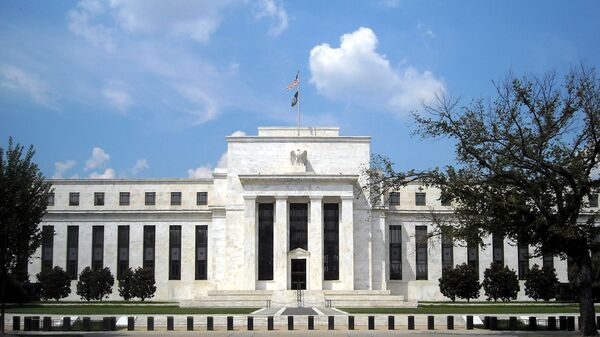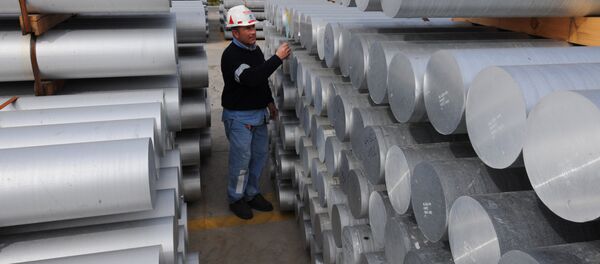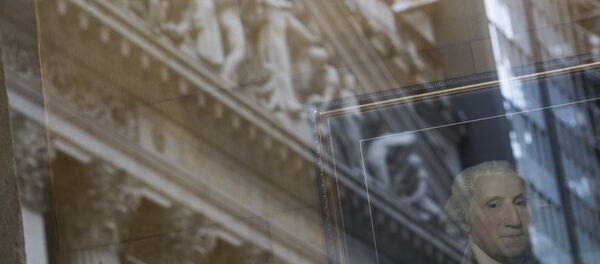Kristian Rouz — The US central bank is facing a major challenge to its policies, as interest rates on overnight transactions have increased above the Fed's 1.75-2.00 percent range.
This development might pose a threat of the Federal Reserve gradually losing control of the money market.
US overnight rates rose to 2.05 percent earlier this month, in line with the rising yields on one-month and three-month Treasury bonds. This happened due to investors pulling capital out of short-term debt in favor of lucrative opportunities in the rapidly growing Main Street economy.
READ MORE: Federal Reserve Claims Victory Over US Unemployment as Policy Debate Intensifies
The Fed's gradual normalization of monetary conditions — in the form of cautious rate hikes — might not be decisive enough to address the needs of a robust market. Investors expect Fed interest rates to go up at a quicker pace.
However, central bankers say more hawkish rate hikes could suppress inflation and hurt economic growth.
"This is a risk the Fed will strongly prefer to avoid," Zoltan Pozsar of Credit Suisse Group said. "Changes will soon be necessary to the framework to ensure that overnight rates continue to print within the target band."
Among possible changes to the Fed's policies, Pozsar suggested several options. The Fed could start selling long-term US bonds to dampen their value and push longer-term yields up — which would effectively suppress short-term yields and contain the rise in overnight rates.
Pozsar also said the Fed could temporarily halt its balance-sheet reductions to bring overnight rates in line with base borrowing costs. The Fed holds more than $4 tln worth of securities, out of which $2.36 tln are US Treasury notes.
The central bank's recent effort to sell these securities in the open market has pushed bond yields, natural interest rates, and overnight rates up — at a pace exceeding the Fed's pace of interest rate hikes.
READ MORE: US Federal Reserve Expects Further Interest Rate Increases — Powell
Yet another option for the Fed to deal with rate discrepancies, according to Pozsar, would be introducing an overnight repo facility. Such a move could be a necessity regardless of any other measures the Fed might take.
It's "necessary to police the top of the Fed's overnight target range," Pozsar stressed.
However, there is a simple solution as well — the Fed could just raise its base interest rates for a third time this year, to the gauge of 2.00-2.25. Overnight rates at their current level would fall into that range.
The Fed's upcoming policy meeting is slated for 25-26 September. The Federal Open Market Committee (FOMC) will assemble only three times before the yearend and many economists and the majority of Fed board members believe two of these meetings will produce rate hikes.
"Based on what I see today, I think two more rate hikes could be appropriate" this year, Esther George, president of the Federal Reserve Bank of Kansas City, said.
This would bring the Fed's benchmark rates up to 2.25-2.50 percent by the end of December.
Earlier this year, the Fed attempted to curb the uncontrollable increase in overnight rates by cutting IOER. The move took place back in June and forced banks to ramp-up the supply of money in the market.
READ MORE: Federal Reserve Helped US Top Banks to Avoid Stress Tests Failure — Reports
However, lenders have only bought $10 bln worth of Treasury notes ever since — an amount, insufficient to contain the upward pressure on overnight borrowing costs.
The IOER cut produced a temporary 0.05-percent decline in overnight rates, which "didn't do the trick and more cuts will be necessary," Pozsar said.
The Federal Reserve could cut IOER once again before the yearend, experts suggest.
But the Fed continues selling its holdings of US government bonds, whilst the Treasury Department is issuing new ones to keep the federal government running. These two factors are pushing the overnight rate up.
In this light, it remains unclear whether an IOER cut, combined with the expected Fed rate hikes, would be enough to offset the influx of Treasury bills in the open market and reinforce the central bank's grip on the economy.




